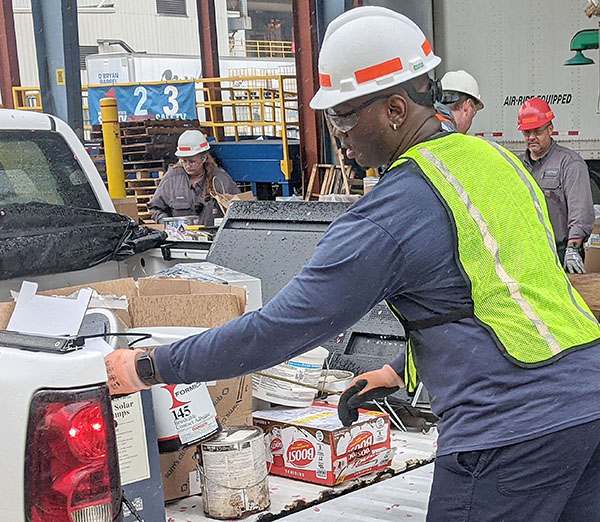
Recently, we’ve been discussing Land Disposal Restrictions. In particular, we have covered some of the alternative treatment standards which can be applied to certain types of waste. These alternative treatment standards can be used in place of the preexisting numerical treatment standards for wastes which are not as amendable to typical standards. So far we have covered the alternative standards for contaminated soils and hazardous waste containing debris. The final example which we will cover today deals with lab pack wastes.
Lab pack wastes are treated differently for land disposal because of the way in which they are generated. According to the EPA, “laboratories commonly generate small volumes of many different listed and characteristic wastes. Rather than manage all these disparate wastes individually, laboratories commonly take advantage of regulatory provisions that allow them to overpack many small containers of hazardous waste into a larger drum. These containers are known as lab packs.” What this means is that a labpack waste container could contain multiple different kinds of hazardous waste so the EPA needed to determine the best way to treat several different items at the same time.
In order to accomplish this, “[the] EPA…assigned them an alternative treatment standard, incineration, that allows generators to apply one treatment standard for the entire lab pack rather than applying the treatment standard for each individual waste code contained within the lab pack (§268.42(c)). The primary condition for application of this alternative, however, is that the lab pack may not contain any of the heavy metal-bearing waste codes identified in Part 268, Appendix IV.”
So, by allowing labpack wastes to be disposed of via incineration the EPA made the process of working with hazardous chemicals less cumbersome for laboratories. These regulations are further addressed in Subpart K of the waste generator regulatory requirements in 40 CFR Part 262. The formal name of the update is “Alternative Requirements for Hazardous Waste Determination and Accumulation of Unwanted Material for Laboratories Owned by Colleges and Universities and Other Eligible Academic Entities Formally Affiliated with Colleges and Universities.” [source]
According to the EPA, “this alternative set of regulations is specifically tailored to hazardous waste generation patterns in academic laboratories. It allows flexibility regarding where, at the eligible academic entity, the hazardous waste determination may be made, provided certain provisions are met that are designed to protect human health and the environment.” You can read more about academic lab regulations here.
EPA cited information (unless otherwise noted) for this blog post was gathered from the EPA document, “Introduction to Land Disposal Restrictions.” As always, this blog post is not intended to be comprehensive and it is always best to check with the EPA and local government for full, up-to-date, rules and regulations.
More News From Heritage
-
6/27/24
Heritage Environmental Services to Acquire EBV from General Dynamics
Heritage Environmental Servicess, an EQT Infrastructure portfolio company, will acquire EBV from General Dynamics
-
6/13/24
Meet The Facilities – East Liverpool
An inside look at our incineration facility located in East Liverpool, OH
-
5/24/24
Habitat for Humanity 2024
Heritage hosted our 14th annual Habitat for Humanity build this month, partnering with over 50 employees from various THG companies.
-
5/6/24
Date set for the household hazardous waste collection in East Liverpool, Ohio
-
3/12/24
Equal Pay Day – Spotlighting Our Female Drivers
-
3/8/24
International Women’s Week Spotlight – Shannon Dippel
For International Women's Week, we're spotlighting some of the incredible women in the Heritage family. Our final spotlight is Shannon Dippel.
-
3/8/24
International Women’s Week Spotlight – Susan Adams
For International Women's Week, we're spotlighting some of the incredible women in the Heritage family. Our sixth spotlight is Susan Adams.
-
3/7/24
International Women’s Week Spotlight – Lea Wilson
For International Women's Week, we're spotlighting some of the incredible women in the Heritage family. Our fifth spotlight is Lea Wilson








